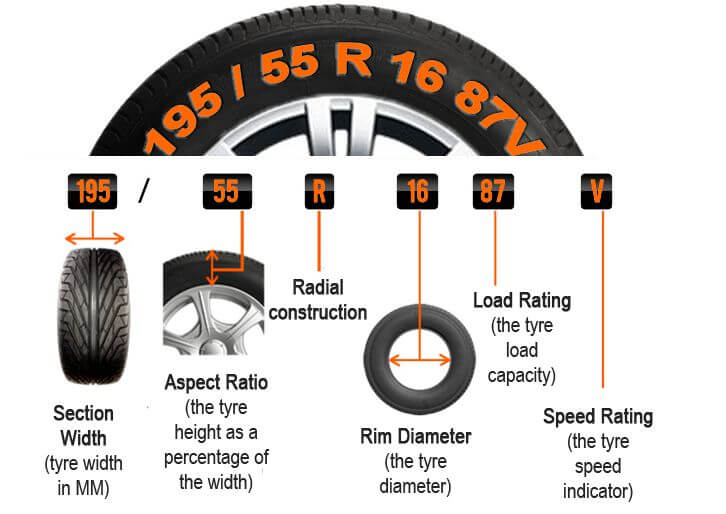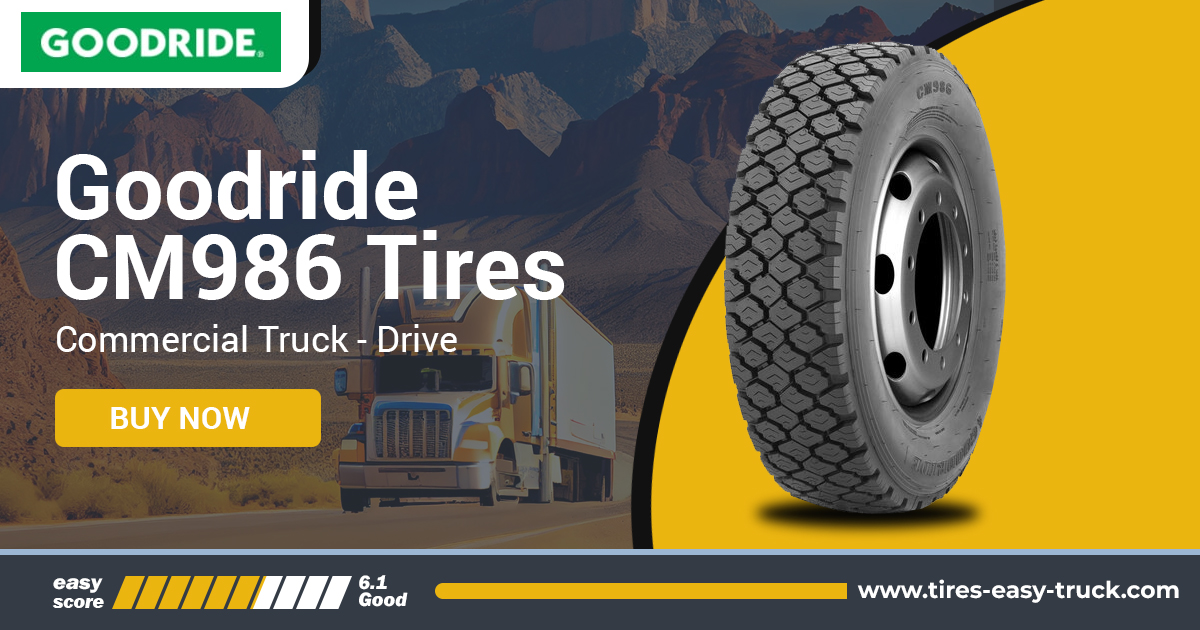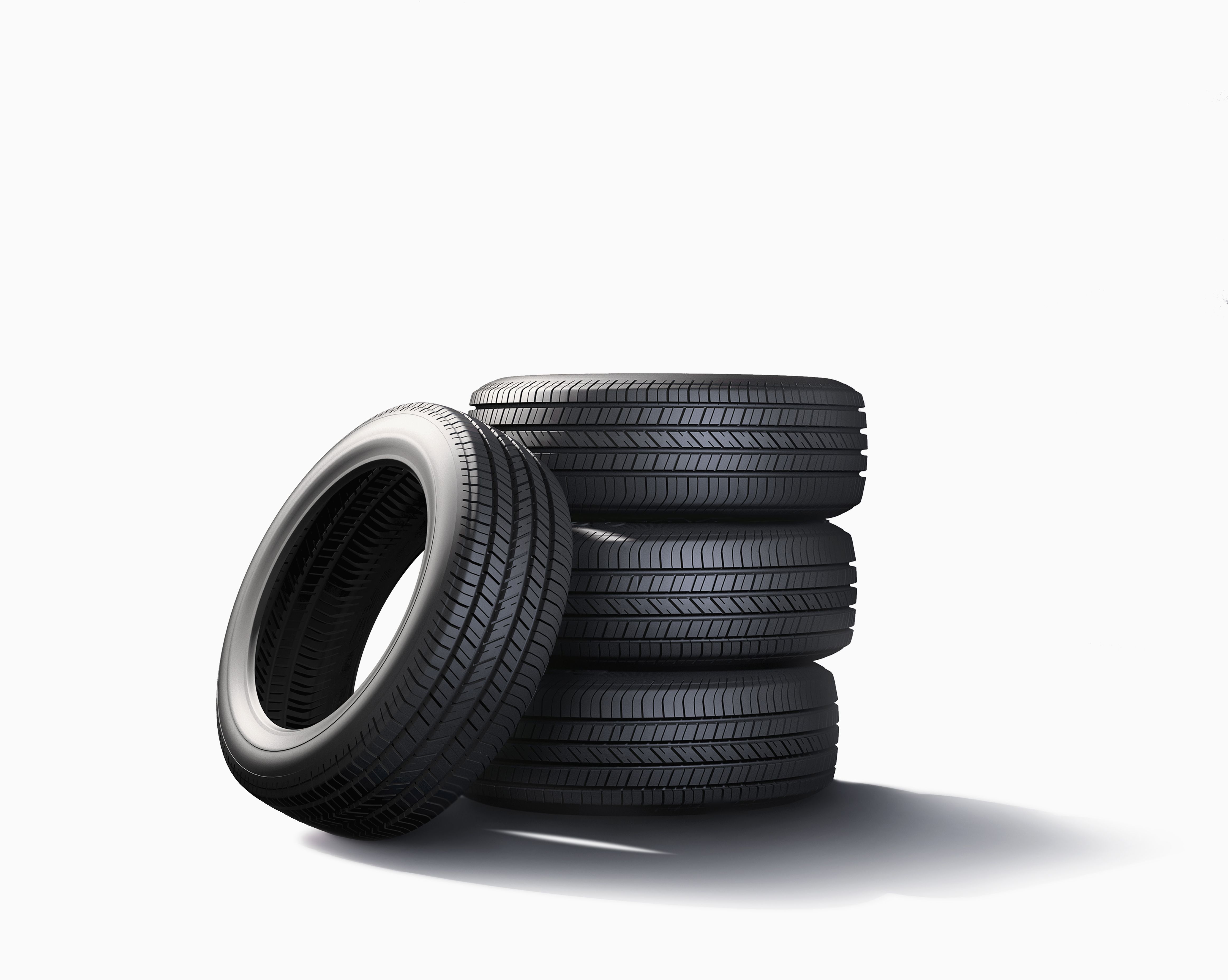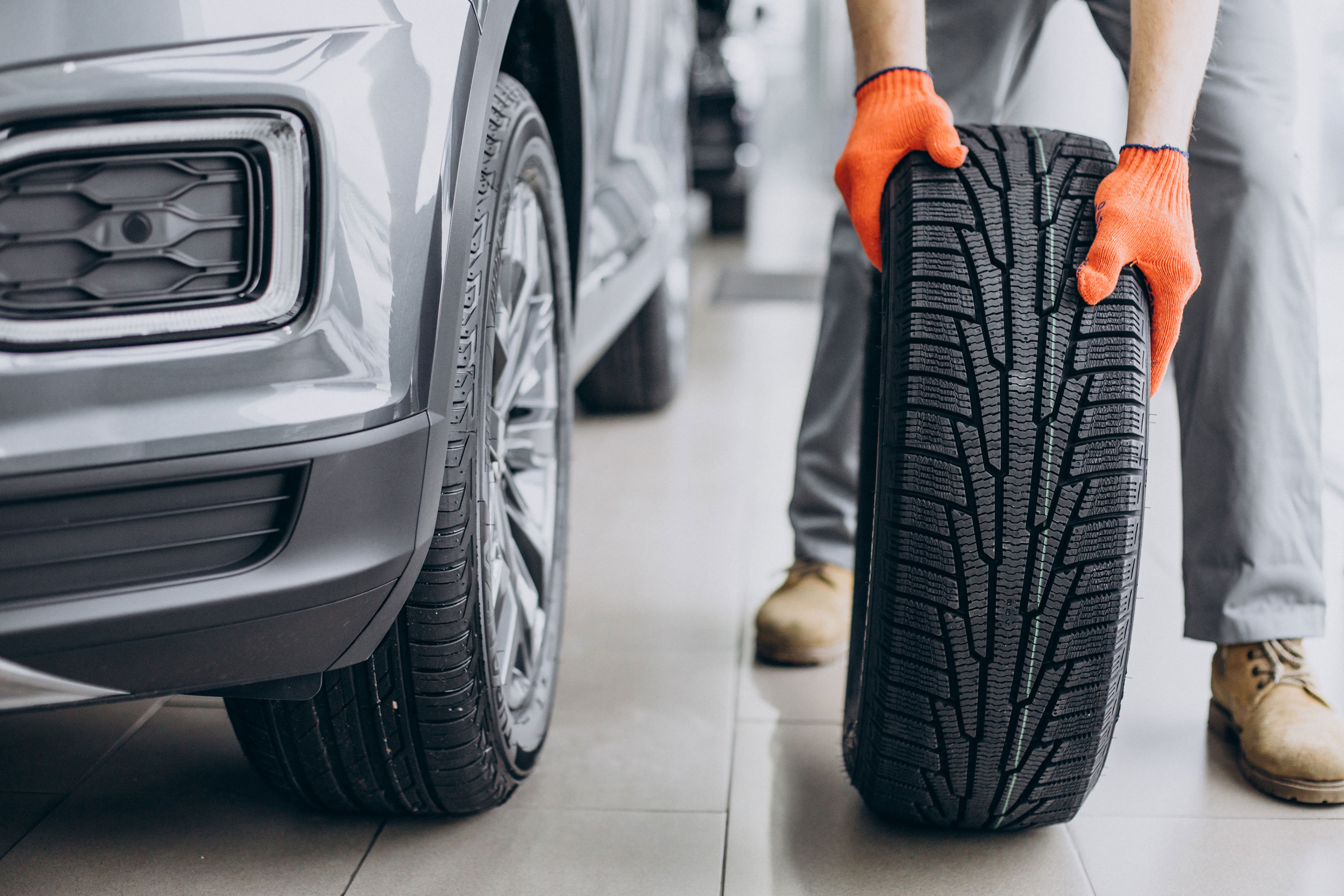Table Of Contents
- 1 Benefits of Buying Quality Tires
- 2 Understanding Tire Sizes and Types
- 3 Factors to Consider Before Buying Tires
- 4 Budget-Friendly Tire Options
- 5 Where to Buy Tires
- 6 Maintaining and Extending Tire Lifespan
- 7 Tips for Buying Used Tires
- 8 Importance of Professional Installation
- 9 Top Tire Brands on the Market
- 10 Eco-Friendly Tire Options
- 11 Tire Warranty and Insurance Coverage
- 12 Common Tire Buying Mistakes to Avoid
- 13 Shopping for Winter Tires
- 14 Upgrading to Performance Tires
- 15 Choosing the Right Tires for Your Vehicle
Benefits of Buying Quality Tires
Importance of Tire Safety
Purchasing quality tires is essential for ensuring safety on the road. High-quality tires offer better grip and stability, significantly reducing the risk of accidents. For instance, tread patterns and rubber compounds specifically designed for your driving conditions enhance traction during wet or icy weather, giving you peace of mind. Remember, regular maintenance coupled with quality tires can save lives.
Longevity and Performance
Investing in quality tires not only boosts safety but also improves longevity and performance. Here’s why:
- Durability: Premium tires can withstand wear and tear, lasting longer than cheaper alternatives.
- Performance: They provide better handling, acceleration, and braking power.
By opting for quality tires, drivers often experience a smoother ride and extended mileage, ultimately saving money in the long term. Choosing the right tires is a small change that makes a big difference.

Understanding Tire Sizes and Types
Decoding Tire Labels
When shopping for tires, understanding tire labels is vital. These labels provide essential information about the tire’s size, load capacity, and speed rating. For example, a label that reads “205/55R16” breaks down into:
- 205: Tire width in millimeters
- 55: Aspect ratio (height to width)
- R: Radial construction
- 16: Rim diameter in inches
Grasping these details ensures you select the appropriate tires for your vehicle.
Choosing the Right Tire Type
Selecting the right tire type can significantly impact your driving experience. Here’s a quick guide to common tire types:
- All-Season Tires: Versatile and suitable for various weather conditions.
- Winter Tires: Designed for icy, snowy, and cold conditions, offering superior traction.
- Performance Tires: Ideal for sports cars, enhancing speed and handling.
Taking the time to understand these options ensures you make informed, confident choices.

Factors to Consider Before Buying Tires
Weather Conditions
Before making a tire purchase, consider the weather conditions in your area. Tires are designed for specific environments, and using the right type can enhance safety and performance. For example:
- Rainy Regions: Opt for tires with deep treads for better water dispersion and reduced hydroplaning.
- Snowy Areas: Winter tires provide improved traction and control in icy conditions.
- Mild Climates: All-season tires may suffice, balancing performance and comfort.
Understanding how the weather affects your driving will guide you in selecting appropriate tires.
Driving Habits
Next, reflect on your driving habits. Do you frequently take long highway trips, or navigate city streets? Here are key considerations:
- Highway Driving: Performance tires enhance speed and stability on long journeys.
- City Driving: Opt for tires that offer a comfortable ride and quick maneuverability.
By aligning your tire choice with your driving style and conditions, you can significantly enhance your overall driving experience.

Budget-Friendly Tire Options
All-Season Vs. Performance Tires
When considering budget-friendly tire options, it’s essential to understand the difference between all-season and performance tires. All-season tires are versatile and designed for everyday driving in various weather conditions, making them an excellent choice if you want a reliable, affordable option. On the other hand, performance tires focus on maximizing handling and traction, typically offering a better grip on dry roads. However, they often come with a higher price tag and are less suitable for adverse weather conditions. So, consider your driving needs—if you mostly drive in moderate conditions with occasional spirited driving, all-season tires might be your best bet for value.
Cost-Effective Brands
When it comes to cost-effective tire brands, several options offer quality without breaking the bank. Brands like:
- Hankook: Known for high performance and durability at reasonable prices.
- Uniroyal: Offers great all-season options with solid warranties.
- General Tire: Provides affordable winter options with good traction.
By researching these brands, you can find tires that fit both your vehicle’s needs and your budget. Choosing wisely helps ensure safety and comfort on the road without overspending.

Where to Buy Tires
Online Retailers Vs. Local Shops
Deciding where to buy tires is crucial; both online retailers and local shops have their pros and cons. Online retailers often provide a vast selection and competitive pricing. For instance, websites like Tire Rack or Discount Tire allow you to compare brands, read customer reviews, and get tires delivered to your doorstep or a nearby installation center. Conversely, local shops offer personalized service and the opportunity to consult with experts one-on-one. You get immediate assistance, and many provide installation services. This can be particularly helpful if you have questions or need advice on the best tires for your vehicle.
Tire Retailer Reviews
Before making a purchase, checking tire retailer reviews can be beneficial. Websites like Yelp or Google Reviews offer insights from real customers, highlighting aspects such as:
- Service Quality: Friendly staff and professional installation.
- Pricing: Competitive rates and transparent pricing without hidden fees.
- After-Sales Support: Assistance with warranties and issues.
Reading these reviews can guide you in choosing a reputable retailer, ensuring a positive buying experience.

Maintaining and Extending Tire Lifespan
Proper Inflation and Rotation
To get the most out of your tires, maintaining proper inflation and rotation is essential. Under-inflated tires can lead to poor fuel efficiency and uneven wear, while over-inflated ones may reduce traction and increase the risk of blowouts. Here’s a quick guide:
- Check Pressure Monthly: Use a reliable gauge to ensure your tires are inflated to the manufacturer’s recommended PSI.
- Rotate Tires Regularly: Following a rotation schedule, typically every 5,000 to 7,500 miles, helps promote even wear across all tires.
Regular Inspections and Maintenance
In addition to inflation and rotation, conducting regular inspections can significantly extend your tires’ lifespan. Look for signs of wear, such as:
- Tread Depth: Use the penny test—if Lincoln’s head is visible, it’s time for new tires.
- Sidewall Damage: Check for cracks or bulges that could compromise tire integrity.
Regularly maintaining your tires not only enhances safety but can also save you money in the long run by avoiding premature replacements. By staying proactive, you can enjoy your tires for many miles to come!

Tips for Buying Used Tires
Inspecting Tread Depth
When considering used tires, inspecting the tread depth is crucial for ensuring safety and performance. Worn tires can significantly compromise traction and increase stopping distances. A simple way to check is the penny test:
- Insert a penny into the tread grooves with Lincoln’s head facing down.
- If you can see the top of Lincoln’s head, the tread is too shallow, and it’s time to pass on that tire.
Ideally, tires should have at least 4/32 of an inch of tread remaining for decent performance.
Checking for Signs of Damage
In addition to tread depth, carefully examine the tires for any signs of damage. Look for:
- Cracks: These can indicate dry rot, compromising the tire’s structure.
- Bubbles or Bulges: These often suggest internal damage, which can lead to blowouts.
- Uneven Wear: This could signal alignment issues that could affect your vehicle’s handling.
Taking the time to check these aspects can help you make an informed purchase and keep your driving experience safe.

Importance of Professional Installation
Safety and Performance Benefits
Opting for professional installation of your tires is essential for enhancing safety and overall performance. Trained technicians understand the intricacies involved in properly mounting tires, ensuring they are balanced and aligned correctly. A few key benefits include:
- Improved Safety: Proper installation reduces the risk of tire failure, which can lead to dangerous situations on the road.
- Enhanced Performance: Well-installed tires offer better traction and handling, optimizing your vehicle’s performance.
I remember when my friend had their tires installed by a professional; they noticed a significant reduction in road noise and improved handling almost immediately!
Ensuring Correct Fit
Furthermore, professionals ensure that tires fit your vehicle’s specifications perfectly. This includes checking:
- Tire Size: Ensuring the right dimensions for optimal operation.
- Wheel Compatibility: Avoiding issues related to rim size or bolt pattern.
By entrusting this important task to experts, you can enjoy peace of mind knowing that your tires are installed safely and correctly.

Top Tire Brands on the Market
Michelin
When it comes to tire brands, Michelin stands out for its commitment to quality and innovation. Known for producing tires that provide exceptional traction and comfort, Michelin offers a wide range of options tailored for various driving needs. Their popular models include:
- Michelin Pilot Sport: Perfect for high-performance cars, delivering superior grip.
- Michelin Defender: An excellent choice for all-season driving, focusing on durability and fuel efficiency.
Many drivers swear by Michelin; a colleague of mine recently switched to Michelin tires and praised the noticeable difference in ride quality and handling!
Bridgestone
Another leading brand is Bridgestone, which is renowned for its performance tires and commitment to sustainability. Bridgestone’s products are designed to cater to both everyday drivers and enthusiasts alike. Key offerings include:
- Bridgestone Potenza: Tailored for sports cars, this tire offers enhanced responsiveness.
- Bridgestone Ecopia: Focused on fuel efficiency, perfect for eco-conscious drivers.
With innovative technology and a broad selection, Bridgestone consistently ranks high among tire enthusiasts and casual drivers alike. Investing in these top brands can significantly enhance your driving experience!

Eco-Friendly Tire Options
Sustainable Materials
As more drivers become environmentally conscious, many tire manufacturers are focusing on eco-friendly options. One vital aspect is the use of sustainable materials in tire production. Companies like Michelin and Bridgestone are incorporating:
- Natural Rubber: Sourced from trees, reducing reliance on synthetic materials.
- Recycled Materials: Utilizing reclaimed rubber and other materials to minimize waste.
A friend of mine recently switched to eco-friendly tires and felt good knowing their choice contributed to reducing environmental impact, all while maintaining performance.
Low Rolling Resistance
Another feature of eco-friendly tires is low rolling resistance. These tires are designed to reduce friction between the tire and the road, which can lead to several benefits:
- Improved Fuel Efficiency: Less energy is required to move the vehicle, saving money at the pump.
- Lower Carbon Emissions: Enhanced fuel efficiency translates to reduced greenhouse gases.
By investing in eco-friendly tires, drivers can enjoy performance benefits while supporting sustainable practices in the automotive industry. It’s a win-win for your wallet and the planet!

Tire Warranty and Insurance Coverage
Understanding Warranty Terms
When purchasing new tires, understanding warranty terms is crucial for maximizing your investment. Most tire warranties cover defects in workmanship and materials, with coverage typically lasting from 40,000 to 80,000 miles, depending on the brand and model. Key points to look for include:
- Mileage Limits: Know the warranty’s mileage cap to avoid surprises.
- Road Hazard Coverage: Check if it covers damages from nails or potholes.
A co-worker of mine learned the hard way about reading the fine print when a tire defect left him stranded, but luckily, his warranty helped cover the replacement.
Benefits of Tire Insurance
In addition to warranties, tire insurance can provide extra peace of mind. This insurance typically covers tire damage from road hazards and may include:
- Full Replacement: Depending on the coverage, you may receive a new tire even after a minor incident.
- Financial Protection: It can save you money in unexpected situations, giving you confidence during your travels.
Having both warranty and insurance ensures that you’re prepared for any surprises on the road, making your tire investment much more secure!

Common Tire Buying Mistakes to Avoid
Ignoring Proper Maintenance
One of the biggest mistakes drivers make after purchasing tires is ignoring proper maintenance. Investing in high-quality tires does not guarantee longevity; regular upkeep is essential. Here are vital maintenance tips to remember:
- Regular Tire Rotations: Rotate your tires every 5,000 to 7,500 miles to ensure even wear.
- Regular Pressure Checks: Maintain proper tire pressure to maximize performance and fuel efficiency.
A friend of mine neglected his tire maintenance, only to discover uneven wear patterns leading to a costly replacement far too soon. Keeping up with simple maintenance can help you get the most mileage out of your tires.
Overlooking Warranty Details
Another common oversight is overlooking warranty details. Many buyers ignore critical aspects like:
- What’s Covered: Understand the specifics, including any limitations or exclusions.
- Claim Process: Familiarize yourself with the steps you need to follow for warranty claims.
By understanding your warranty, you can avoid potential pitfalls and ensure you’re protected in case of defects. Taking these proactive steps will significantly enhance your tire buying experience!

Shopping for Winter Tires
Importance of Winter Tread
When it comes to winter driving, choosing the right tires is paramount. Winter tread is specifically designed to provide enhanced traction in cold, icy conditions. Here’s what to look for:
- Deep Treads: These help channel snow and slush away, minimizing hydroplaning risks.
- Sipes: Tiny slits in the tread create additional biting edges for better grip on slippery surfaces.
A family member switched to dedicated winter tires last season and immediately noticed how much safer and more controlled their car felt in snowy conditions.
Handling Icy and Snowy Conditions
Winter tires excel in handling icy and snowy conditions. Their softer rubber compounds remain flexible in colder temperatures, ensuring better contact with the road. This specific design can help you:
- Stop Faster: Winter tires provide superior braking performance on ice and snow.
- Steer Confidently: Improved grip helps prevent skidding and enhances vehicle control.
Investing in winter tires will significantly elevate your safety and comfort during the frosty months. Don’t wait until the first snowfall to make the change!

Upgrading to Performance Tires
Benefits for Sports Cars
If you own a sports car, upgrading to performance tires can profoundly impact your driving experience. These tires are engineered for maximum grip and improved handling, making them perfect for high-speed driving. Key benefits include:
- Enhanced Traction: Performance tires are designed to provide excellent grip on both dry and wet roads.
- Better Cornering Stability: Their construction allows for more responsive steering and stability during sharp turns.
A friend of mine recently made the switch and couldn’t believe the transformation in his car’s handling during weekend drives.
Driving Experience Improvements
Beyond just performance, upgrading to these tires enhances the overall driving experience. You’ll notice:
- Smoother Ride: Improved shock absorption translates to less road vibration.
- Increased Confidence: With heightened responsiveness, you’ll feel more in control behind the wheel.
Investing in performance tires is an excellent way to elevate your driving experience and maximize your vehicle’s potential. The difference is unmistakable!

Choosing the Right Tires for Your Vehicle
Compatibility with Car Model
Selecting the right tires for your vehicle starts with ensuring compatibility with your car model. Every vehicle has specific tire size and type recommendations, which directly affect handling and performance. To make an informed choice:
- Check Owner’s Manual: Your vehicle’s manual provides valuable insights on the correct tire specifications.
- Consider Driving Conditions: Match tire types to your typical driving conditions—whether it’s city driving or highway cruising can influence your selection.
A colleague of mine discovered the importance of this when he tried to fit oversized tires on his sedan, only to realize it compromised both the ride and safety.
Specialty Tires for Off-Roading
For those who enjoy off-roading, specialty tires are a game-changer. These tires are built to tackle rugged terrains and challenging conditions, offering features such as:
- Aggressive Tread Patterns: Designed for better grip on loose surfaces like mud and gravel.
- Reinforced Sidewalls: Built to withstand punctures and cuts from sharp objects.
Choosing the right tires tailored to your specific vehicle and driving conditions can significantly enhance your overall driving experience, whether on or off the road.




